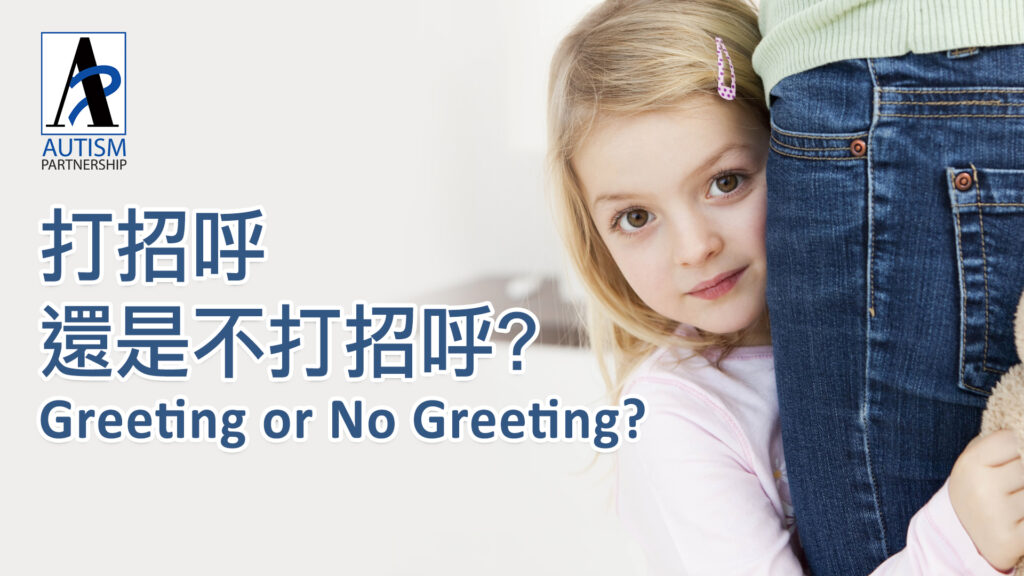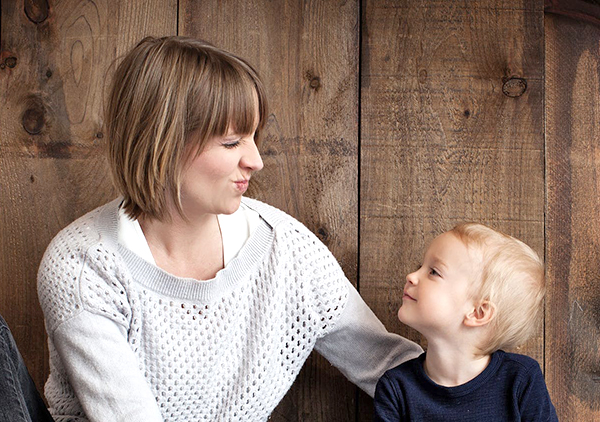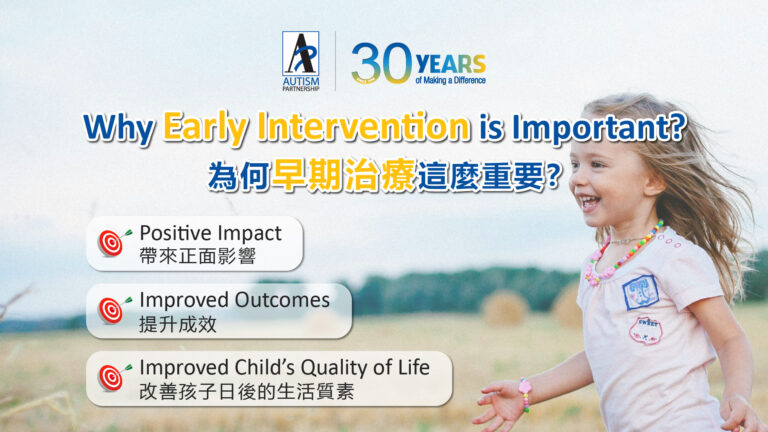
I remember my parents always reminded me to greet people when I was young. Greeting is engraved in our social lives from early on and it is one of the social communication skills that children are exposed to at a young age.
As many of you might have known already, many children with ASD have troubles in initiating and responding to greeting. As a result, greeting has become one of the common training targets for children who are on the spectrum. Undoubtedly, greeting is a social communication element that allows us to further engage in a social interaction. However, to make greeting an effective tool for social communication and interaction, we need to pay attention to a child’s social relatedness (how much he/she enjoys people) and his/her ability to respond and initiate to others.
If a child has little interest in people, his/her motivation to learn to greet is probably not very high, and greeting might even seem meaningless to him/her. Even when a child is socially interested, if he/she does not respond or initiate to others consistently, it would still make greeting difficult. Thus, assessing and teaching relevant prerequisites are pivotal. Below is some basic skills that are worth looking into when evaluating the appropriateness of teaching greeting.

A child can learn to respond to his/her name vocally and non-vocally, for instance looking at or going to the person who call his/her name. Typically speaking, responsiveness to name is affected by whether or not the child is engaged, how engaged he/she is (the interest level of activity/event that the child is engaged in), familiarity of the person who call his/her name, position and distance of the caller, busyness of the environment etc. Apart from limited social interest, low responsiveness to name might be related to not wanting to be interrupted as well. Thus, it might be helpful to include embedded reinforcers to increase motivation in initial training.

On the note of motivation, one can easily conclude that the more attractive an object is, the more likely for a child to receive it. So it is a good idea to use objects that the child enjoys before moving onto neutral items. Not only it increases motivation, but also makes responding more meaningful and functional. Games that involve receiving and passing objects such as Pass the Parcel and Hot Potato can be a fun way to enhance one’s responding.

Initiation can occur vocally (speech) and physically (non-vocal actions such as giving things to others, pointing at something, or looking at someone). If a child has not acquired the ability to initiate for things or people that he/she desires, learning to initiate greeting does not seem to be meaningful and appropriate.
Unquestionably, there are situations where greeting is a good skill to teach. However, when designing programs for children with ASD, we need to ask ourselves why we are teaching certain skills and what prerequisites need to be developed in order to make teaching more effective and functional.
Autism Partnership (AP) is one of the most established Applied Behavior Analysis (ABA) service providers for Autism Spectrum Disorders (ASD) in the world. Formed in 1994 in the United States, AP is run by professional clinicians and specializes in providing one-on-one therapy, group interventions and overseas consultation for children with ASD and their families.

Every little life is a special present for a family. From the time a baby is born, parents journey through lots of highs and lows, wishing for their child to grow up with a big smile, make great friends, find their own way in a job they love, and create a happy family. However, for […]

Autism Spectrum disorder can be diagnosed as early as 18 months. Research shows strong evidence on how effective Applied Behavior Analysis (ABA) can help children with Autism. It helps to deal with children’s challenging behaviors such as inattention, aggression, self-stimulation, etc. Howard, et al (2005) conducted a study to compare the effectiveness of 3 treatment […]

In today’s society where information flows freely, parents can easily receive different messages. However, these messages are often debatable or even wrong. Believing wrong information can easily lead to misguided choices and delay treatment, the consequences of which may last a lifetime. When conducting one-on-one consultations with parents, I often hear the following misguided views […]
Please share to let more people learn about ASD and ABA therapy:
AP holds the belief that with quality Autism Partnership Method (APM) treatment, individuals with autism should reach their fullest potential and achieve the greatest degree of independence and highest quality of life possible.

Sign up now to get ABA and Autism related news delivered to your inbox. Enter your email to get started
Hong Kong Center
Kowloon Center

All information received will always remain confidential. We will contact you as soon as we review your message. Thanks